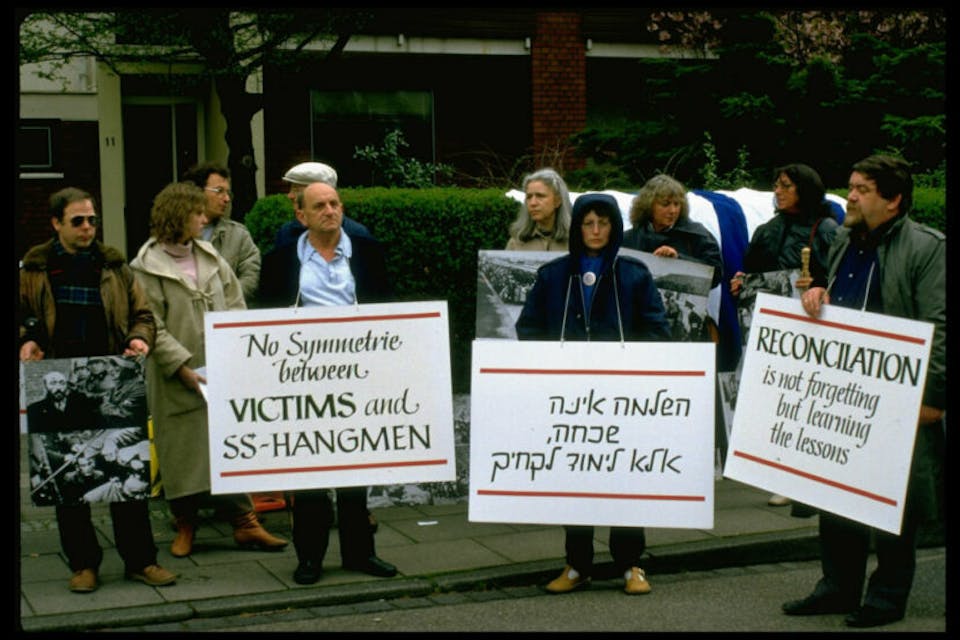
May 8, 2025
What to Do When a U.S. President Lays a Wreath at a Cemetery for Nazi War Dead
The Bitburg controversy, 40 years on.
Forty years ago this week, Ronald Reagan, then just a few months into his second term, visited West Germany to take part in the G-7 Economic Summit. As the visit coincided with the 40th anniversary of the Allied victory over the Third Reich, President Reagan and the West German chancellor Helmut Kohl scheduled several events to mark the occasion. These included a wreath-laying ceremony at the Bitburg military cemetery, where, Reagan apparently learned only after agreeing to the visit, several members of the SS were buried.
News of Reagan’s itinerary sparked widespread objections, most notably from Elie Wiesel. In response, Reagan adjusted his schedule to include a visit to the Bergen-Belsen concentration camp. Many American Jews remained outraged. Rabbi Avi Weiss arranged an in-person protest at Bergen-Belsen; this is his account of those events, excerpted from his forthcoming book, Defending Holocaust Memory.
What people most vividly remember today concerning the Bitburg debacle is Elie Wiesel’s dignified and powerful appeal to President Reagan not to visit the Nazi cemetery. Upon receiving the Congressional Gold Medal of Achievement in April 1985, Wiesel urged the president to reconsider his trip to Bitburg. “That place, Mr. President,” Wiesel told him in front of those present for the ceremony, “is not your place. Your place is here with the victims of the SS.”